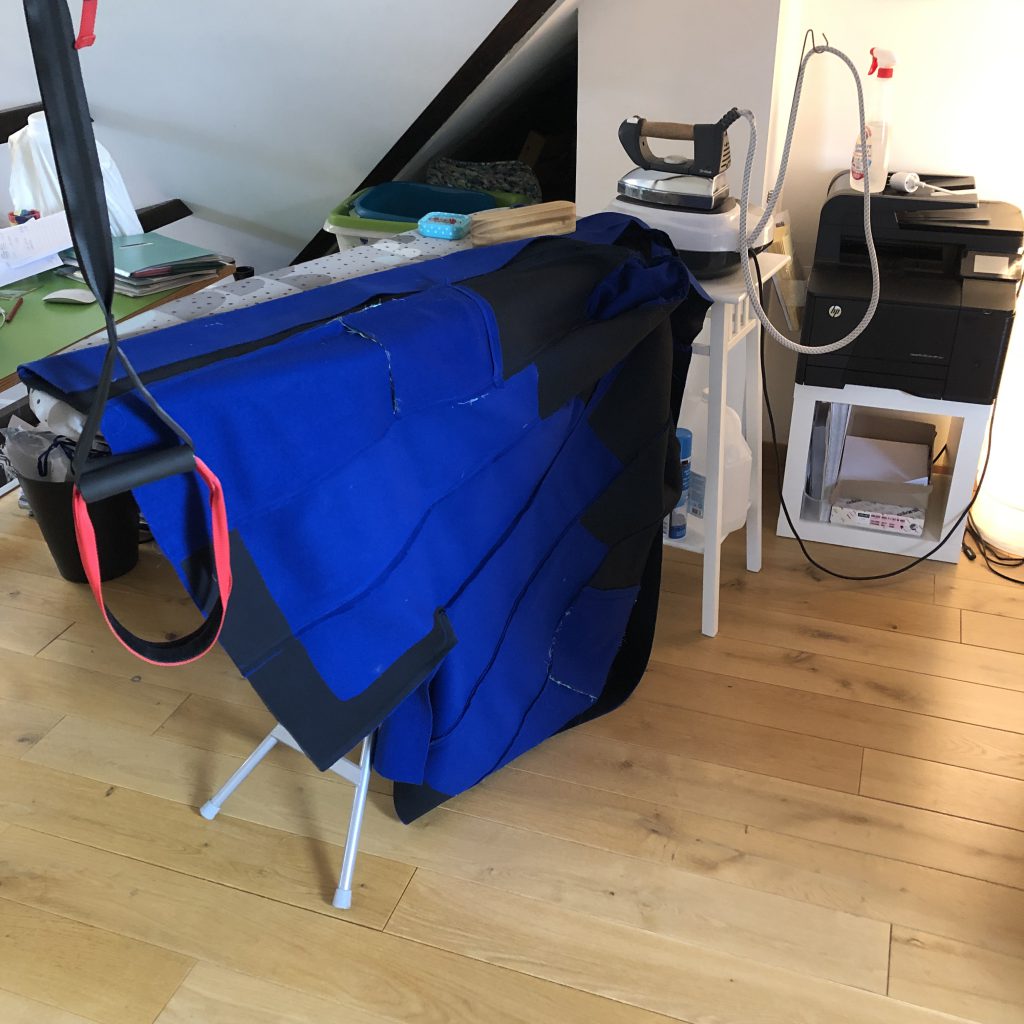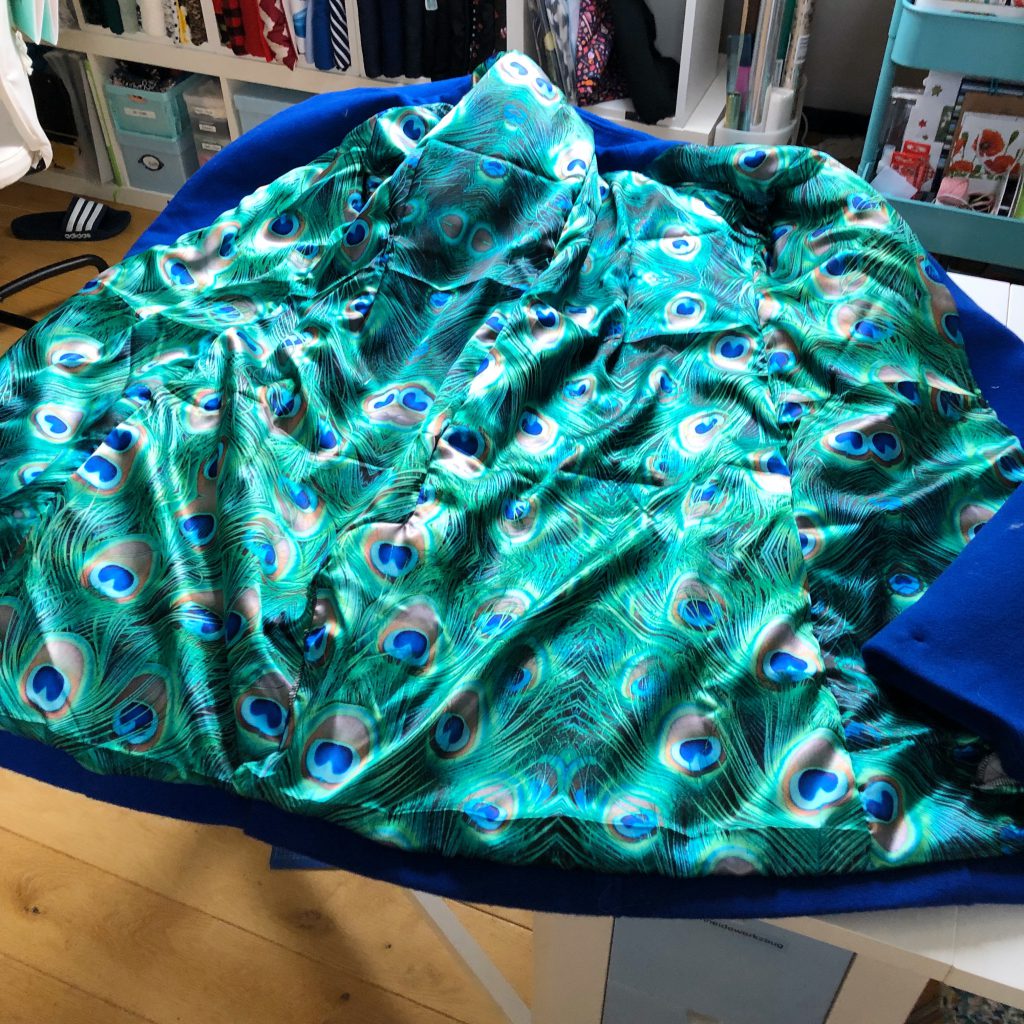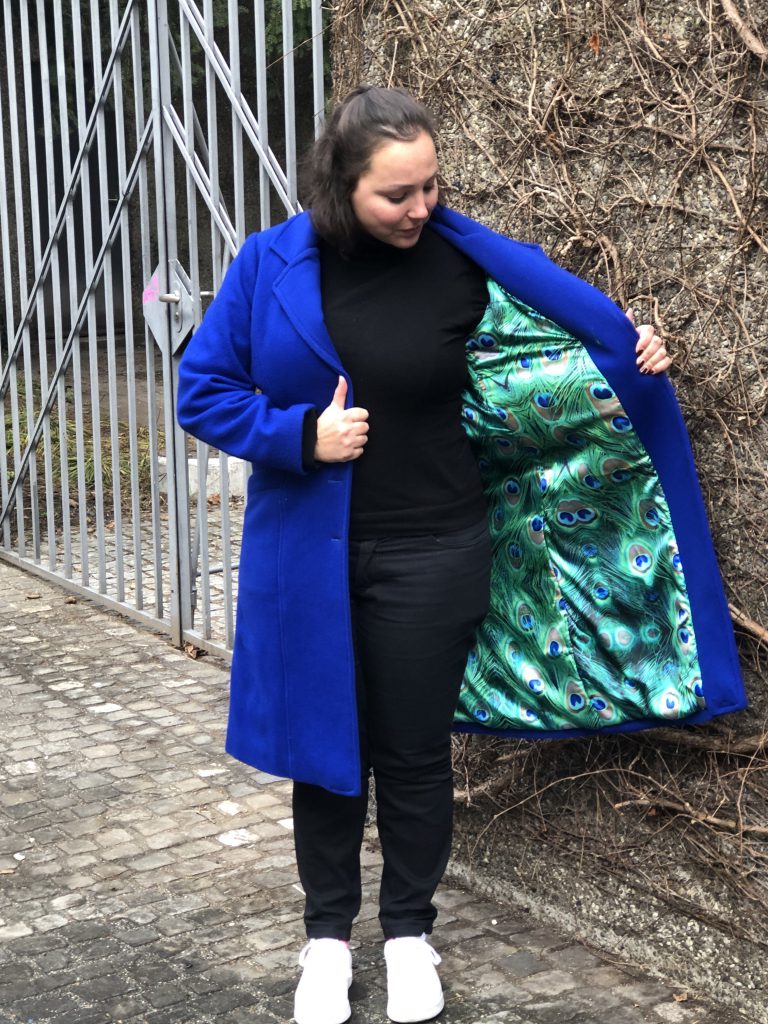Today I’m going to tell you all about my new fabulous Rumana Coat by By Hand London. But first let me thank you for your overwhelming feedback on my last post about the fabric scrap wonder aka the ClosetCase Pouf. Since many of you were interested in hearing about sustainable fabrics or fabrics and sustainability I thought I would write a series about this topic.
Each post will focus on one specific substrate (preferably the one I am using in the make I am showing you) and elaborate some pros and cons. Lastly, I will try to comply a list of some tips for a sustainable fabric habit. If this is not up your ally, just skip on ahead to the coatmaking fabulosity…
About wool
Well, what can I say, if I really love love love one substrate it’s wool. My five year old self would scream in disbelief about this statement because when we think of wool the association “itchy” immediately pops into mind. But let me tell you there is nothing, that wool can’t do. It can be deliciously soft and drapey in a merino jersey, fabulously thick and warm in a brushed wool coating, incredibly smart looking in a suit and wonderfully luxurious in a wool crepe dress.
Wool is a natural fibre made (typically) of sheep hair. There are other animal hair that is spun into wool such as hair from goats, bison, rabbits or camels (I made my partner a coat out of camelhair and he adores it). After shearing, the wool needs to be processed (in part this is due to the residue still remaining in the hair and in part due to color preferences). Only the finest wool will make it into the garment industry.
Now let me tell you about the pros and cons of this substrate:
Pros
- It’s bio-degradable. If you don’t believe me, watch this
- Wool keeps you warm in winter and is moisture wicking in summer (so it’s amazing to help you regulate your body temperature). It’s not stupid to wear a light wool suit in summer…
- I have yet to meet a kind of wool that doesn’t press beautifully. Whatever you want to do with it, wool is your friend.
- It’s natural and renewable. Sheep usually can thrive on land that is hard to farm which is an added bonus.
Now on to the cons
- Sadly, my research on the internet has shown that the industry widely uses pesticides and even (can you believe it!) dip sheep in pesticide baths. This is somewhat horrifying to be honest.
- To make the wool moth-proof some manufacturers use harsh chemicals.
- Wool has to be bleached and dyed like all the fabrics if you want something other than just the beige-y color it has. I will dive into the topic of dyeing fabrics in a later post.
- Some people prefer to get their wool clothes dry-cleaned which in itself has implications for the environment. Keep in mind that wool doesn’t need to be washed as often as other clothing. I always wash my wool clothes on a gentle cycle and it holds up fine – just dry them flat.
Where does that leave us? Well, if you can (and manufacturers are slowly picking this up) buy organic. With the GOTS (Global Organic Textile Standard) you will have some chemicals used to make a substrate or a fabric but the amount and types used are limited. And at least you know the sheep only bathed in water. All in all, I always prefer wool over most substrates (except maybe cotton). Let me know what you think in the comments below.
The By Hand London Rumana Coat
I got my beautiful blue wool fabric from a local shop that sells deadstock fabric ( more on deadstock fabric in a later post). It is pretty thick. Still, I felt the need to interline it with cotton batting. I treated the interlining with the lining as one piece. The lining is made of polyester and printed by spoonflower.de

I treated my interlining and lining as one piece and trimmed the seam allowances after sewing to reduce bulk
I had my mind set a peacock print and scoured the internet for some silk or viscose lining. I did not find any, so I decided to have it printed by spoonflower. Spoonflower uses only very little water for the dyeing process and produces on demand which is appealing to me plus they actually have a few organic substrates. When I ordered the lining though (over 1.5 years ago) they did not have the organic cotton sateen fabric to print on or I might have chosen that one. I have been sponsored fabric by spoonflower before but I actually ordered this lining way before that and paid for it myself.
The pattern features a princess seam coat with slanted pockets and a beautifully tailored collar. I actually made a muslin for this coat but the fit was pretty good from the start. I made a size 18. As always I had to adjust for narrow shoulders and shorten the coat. The pattern suggests that you interface the facing, the front, and the hem but I chose to add some interfacing all across the top as well. I want my coat to hold its shape well since I am going for a smart look.

Next you sew the side panels which is actually a clever pocket construction. Those pockets are well drafted and have a very streamlined look to them.

Well here’s a picture of a mistake I made because against my rules I sewed after 10pm. I set the sleeve in backwards…
Even though I took a swatch with me to buy buttons I did not look at the combination in daylight. The tone was slightly off so I tried to cover my buttons with self fabric. This made them look huge and I wasn’t going for a 60’s vibe. In the end I bought new metal buttons.

This is the “birthing” of the coat. The terme was coined by Jasika Nicole a sewist and actress. It refers to the bagging out process…
I really love my new coat. But since making it a button fell off and I am the laziest person in such matters… It’s ridiculous actually how much I managed to sew in the meantime and still not sew the stupid button on.
Anyway, this is me in my finished beauty!
Until next time! In the meantime you can follow me on Instagram if you like. I will be moving our sewing room and keep you updated on my stories.
Nadine
 BERNINA Corporate Blog -
BERNINA Corporate Blog -














Thank you Nadine for your instructions on the lovely wool blue coat. Love the lining.
This is a fabulous coat, thank you 4 sharing